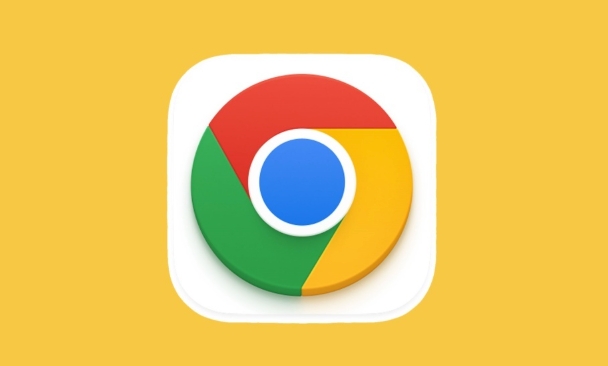Why have my Google Chrome bookmarks disappeared?
Aug 02, 2025 am 06:43 AMCheck your Google Account sync settings to ensure you're signed into the correct account and that bookmarks are enabled in sync; toggle sync off and on if needed. 2. Verify the bookmarks bar is visible by pressing Ctrl Shift B and check the Bookmark Manager for misplaced bookmarks. 3. Restore from Chrome’s automatic backup by navigating to the Chrome user data folder, renaming "Bookmarks" to "Bookmarks.old", and renaming "Bookmarks.bak" to "Bookmarks". 4. Use the Google Data Dashboard or sign into Chrome on another device to confirm synced bookmarks exist, then sign out and back in to restore them. 5. Remove suspicious extensions and run Chrome’s cleanup tool or an antivirus scan to rule out malware. Always manually export bookmarks as HTML for safekeeping, ensure consistent sync across devices, and avoid guest or incognito modes to prevent future loss—most bookmarks can be recovered if sync was active or the deletion was recent.

If your Google Chrome bookmarks have suddenly disappeared, you're not alone — it's a common issue many users face. The good news is that they likely aren't gone for good. Here are the most common reasons and what you can do to recover them.

1. Check Your Google Account Sync Settings
One of the most frequent causes is a sync issue between Chrome and your Google account.
- Make sure you're still signed into the correct Google account in Chrome.
- Click the profile icon in the top-right corner of Chrome.
- Confirm the email shown is the one where your bookmarks were saved.
- If you recently signed out or switched accounts, your bookmarks may have been replaced with those from another account.
Fix it:

- Go to Settings > Sync and Google Services.
- Ensure "Sync" is turned on and that Bookmarks are included in what's being synced.
- Try turning sync off and back on (this can sometimes refresh the connection).
2. Look for Hidden or Moved Bookmarks
Sometimes bookmarks don’t actually disappear — they just become hidden or get moved.
- Check if the Bookmarks bar is hidden:
- Press
Ctrl Shift B(orCmd Shift Bon Mac) to toggle the bookmarks bar visibility.
- Press
- Open the Bookmark Manager:
- Press
Ctrl Shift O(or go tochrome://bookmarks). - Look through the folders to see if your bookmarks are just reorganized or in "Other Bookmarks."
- Press
3. Restore from a Previous Backup (Yes, Chrome Backs Them Up)
Chrome automatically saves a backup of your bookmarks in a file called "Bookmarks.bak".

To restore from backup:
- Close Chrome completely.
- Navigate to your Chrome user data folder:
-
Windows:
C:\Users$$YourUsername]\AppData\Local\Google\Chrome\User Data\Default -
Mac:
~/Library/Application Support/Google/Chrome/Default -
Linux:
~/.config/google-chrome/Default
-
Windows:
- Look for files named:
BookmarksBookmarks.bak
- Rename the current
Bookmarksfile toBookmarks.old(as a backup). - Rename
Bookmarks.baktoBookmarks. - Reopen Chrome — your old bookmarks should be back.
Note: Chrome may overwrite
.bakoccasionally, so this only works if the disappearance was recent.
4. Recover Using Google Dashboard (Sync History)
If sync was active, Google keeps your bookmarks stored on their servers.
- Visit: http://ipnx.cn/link/866e6279baf83a10e3bf47d194d80a3d (though this is deprecated, your data may still exist).
- Better option: Go to your Google Data Dashboard > Chrome > Synced data to see if bookmarks are listed.
- Or, sign into Chrome on another device — your bookmarks might still be there, confirming they’re in your sync data.
If they appear on another device:
- Sign out of Chrome on your current device.
- Delete local profile data (optional, for a clean slate).
- Sign back in and re-enable sync.
5. Check for Malware or Unauthorized Extensions
Rarely, malicious extensions or malware can delete or hide bookmarks.
- Go to Settings > Extensions and remove any unfamiliar or suspicious ones.
- Run Chrome’s built-in cleanup tool:
- Settings > Privacy and Security > Clean up computer.
- Consider running a malware scan with a trusted antivirus.
Final Tips
- Always back up bookmarks manually: Export them via Bookmark Manager > Organize > Export to HTML. Save the file somewhere safe.
- If you use multiple devices, ensure sync is consistent across all of them.
- Avoid using Chrome in guest mode or incognito, as bookmarks won’t save.
Most of the time, bookmarks are recoverable — especially if sync was on or the loss was recent. Start with checking sync and the .bak file, and you’ll likely get them back.
Basically, don’t panic — they’re probably still there or backed up somewhere.
The above is the detailed content of Why have my Google Chrome bookmarks disappeared?. For more information, please follow other related articles on the PHP Chinese website!

Hot AI Tools

Undress AI Tool
Undress images for free

Undresser.AI Undress
AI-powered app for creating realistic nude photos

AI Clothes Remover
Online AI tool for removing clothes from photos.

Clothoff.io
AI clothes remover

Video Face Swap
Swap faces in any video effortlessly with our completely free AI face swap tool!

Hot Article

Hot Tools

Notepad++7.3.1
Easy-to-use and free code editor

SublimeText3 Chinese version
Chinese version, very easy to use

Zend Studio 13.0.1
Powerful PHP integrated development environment

Dreamweaver CS6
Visual web development tools

SublimeText3 Mac version
God-level code editing software (SublimeText3)
 How to stop Chrome from updating in the background on Mac
Jul 21, 2025 am 12:41 AM
How to stop Chrome from updating in the background on Mac
Jul 21, 2025 am 12:41 AM
To prevent Chrome from automatically updating on Mac, it can be done by disabling update services, modifying permissions, and restricting network access. 1. Use terminal commands to disable the GoogleSoftwareUpdate daemon to prevent background updates; 2. Modify update directory permissions to prevent Chrome from starting the update process by itself; 3. Restrict Chrome's outbound network connection through system firewall or third-party tools to further eliminate update requests. Using these methods in combination can effectively prevent Chrome from being automatically updated.
 How to fix Chrome's spell checker not working
Jul 20, 2025 am 12:03 AM
How to fix Chrome's spell checker not working
Jul 20, 2025 am 12:03 AM
When Chrome spelling check fails, you can troubleshoot and fix it by following the following steps: 1. Confirm that the "Use Spelling Check" function is enabled and check whether the corresponding language is enabled in the language settings; 2. Adjust the input language order, delete the redundant language, and ensure that the main language enables spelling check; 3. Close possible conflicting extensions, especially syntax or translation plug-ins; 4. Update Chrome to the latest version and check the operating system updates. If it still doesn't work, try resetting Chrome settings.
 How to stop Chrome from automatically opening PDF files
Jul 21, 2025 am 12:09 AM
How to stop Chrome from automatically opening PDF files
Jul 21, 2025 am 12:09 AM
To let Chrome download directly instead of opening it when clicking on the PDF link, 1. Enter chrome://settings/content/pdfDocuments to check "DownloadPDFfilesinsteadofautomatically opening theminChrome"; 2. Check whether there are plug-ins such as Lightpdf or Smallpdf interfering behavior, you can try to disable the test; 3. You can use the developer tools to copy the link and paste the new tag to trigger the download. The above methods can be selected according to the situation.
 How do I use bookmarks in Sublime Text?
Jul 22, 2025 am 02:44 AM
How do I use bookmarks in Sublime Text?
Jul 22, 2025 am 02:44 AM
SublimeText's bookmarking feature helps quickly jump key lines of code. The setting method is: 1. Click on the blank area on the left side of the line number; 2. Use the shortcut key Ctrl F2 (Mac is Cmd F2). The navigation method is: 1. Press F2 to jump to the next bookmark; 2. Press Shift F2 to return to the previous bookmark. The methods for clearing include: 1. Use Ctrl F2 again to cancel a single bookmark; 2. Clear it with one click through the menu Selection>BookmarkLines>ClearBookmarks. In addition, you can use BookmarkAll function to batch mark multiple lines. After selecting the target line, enter the menu Selection>Book
 How to fix screen tearing when scrolling in Chrome
Jul 25, 2025 am 12:55 AM
How to fix screen tearing when scrolling in Chrome
Jul 25, 2025 am 12:55 AM
The screen tear occurs when the Chrome browser scrolls, which is usually caused by the out-of-synchronization of rendering and refresh. The solutions are as follows: 1. Ensure that hardware acceleration is enabled, you can manually check the settings and restart the browser; 2. Forcefully enable Compositor and related options to optimize rendering; 3. Check the display refresh rate, use single-screen testing, and enable VSync or adaptive synchronization technology on supported devices; 4. Update the graphics card driver or replace the display interface such as using the DP interface. It is recommended to start the troubleshooting with simple steps and gradually adjust to find the best configuration.
 How to fix Chrome profile sync getting stuck in setup
Jul 25, 2025 am 01:10 AM
How to fix Chrome profile sync getting stuck in setup
Jul 25, 2025 am 01:10 AM
The problem of Chrome sync stuck can be solved through the following steps: 1. Check the network connection and Google account status to ensure normal access; 2. Log out and log in to the Chrome account again; 3. Clear the synchronized data and restart the browser; 4. Reset Chrome settings; 5. Try the traceless mode or new user profile. Sequentially checking can effectively restore the synchronization function.
 How to fix Chrome opening new windows instead of tabs
Jul 26, 2025 am 01:29 AM
How to fix Chrome opening new windows instead of tabs
Jul 26, 2025 am 01:29 AM
1. Check whether the shortcut attribute has additional parameters and delete it; 2. Clear cache and switch startup settings, or create new user information; 3. Extend the impact and disable the problem plug-in through traceless mode. Chrome pops up new windows instead of tabs usually due to exceptions in shortcut parameters, cache configuration conflicts, or third-party extension interference. Check and adjust the corresponding settings in turn to resolve.
 Chrome keeps opening new tabs by itself
Jul 22, 2025 am 12:22 AM
Chrome keeps opening new tabs by itself
Jul 22, 2025 am 12:22 AM
The problem of Chrome automatically popping up new tabs is usually caused by malicious extensions, advertising scripts, or browser hijacking. The solutions are as follows: 1. Check and uninstall suspicious extensions, especially ad-class plug-ins; 2. Clear browser caches and cookies to eliminate data corruption; 3. Check whether the homepage and default search engine settings have been tampered with and manually corrected; 4. Use antivirus software such as WindowsDefender or Malwarebytes to scan and clear potential malware; 5. Finally, try resetting Chrome settings to restore the default configuration. Troubleshooting in this order can effectively solve most abnormal labeling problems.






